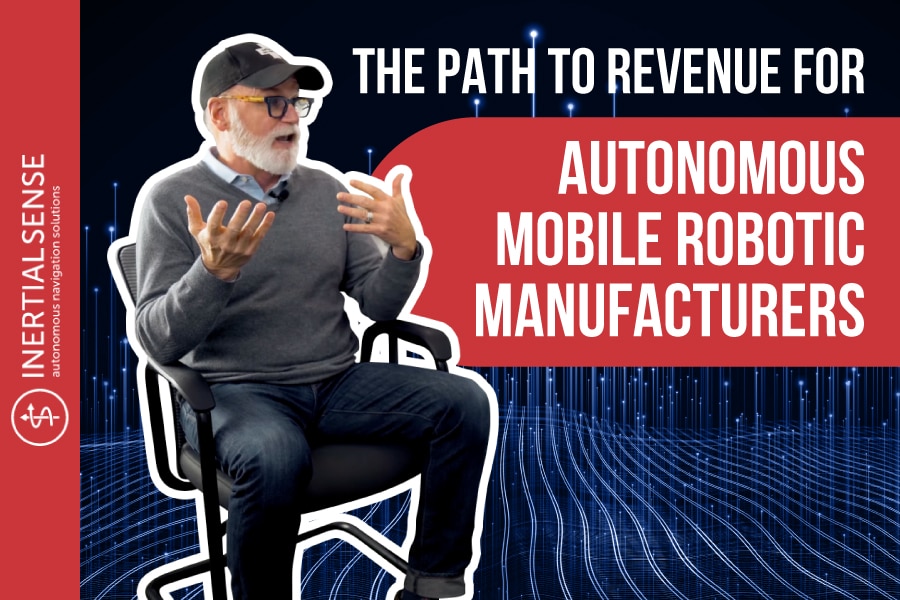
The Path To Revenue For Autonomous Mobile Robotic Manufacturers
Autonomy is a robust industry (no pun intended). So how do we make money? Take a look at the video below as Brett asks Tom to explain the ins and outs of the path to revenue for autonomous mobile robotic manufacturers.
As autonomy continues to grow, so must the revenue. How this is accomplished is through understanding the needs of our customers and supplying that demand. By doing this, it helps to secure long-lasting relationships from supplying the software to the development of new technology.
We are not just a one-stop shop, we are a partnership. If you’re looking for that partnership, let Inertial Sense be that for you. Get in touch with us today!
Learn More:
What Does Inertial Sense Have To Offer To Investors? (Part 1)
What It Means To Be a Full-Stack Solution in Autonomous Robotics
What Are The Steps To Implementing Autonomous Navigation Tech?
Video Transcript
So let’s lift the hood a little bit for Inertial Sense. What is the path of revenue for autonomous mobile robotic manufacturers?
Well. so let’s talk about autonomy for a second, and let’s talk about the different approaches. This is important if I’m building the entire robot. That is a super capital expense, heavy thing. You’ve got to buy metal, you’ve got a manufacturer, you’ve got to do all these things to support getting that thing to market. If you’re leasing, then you’re just doing sort of a margin-driven business and, you know, can you make volume on that? I don’t know.
The way we approach it is really understanding what our customers are looking for, and the last thing that they want us to do is sort of hand them over our brain and then walk away because they’re still not going to be a software company, not going to be a firmware company.
So the way we approach it is how much more value can we add to your customers. How much of a premium can we charge for that, and then how do we turn that into a long-term contract where we are with you every step of the way and we’re not there for just what we ship you originally. It’s do maintenance upgrades, talk about new features, talk about data services, talk about adding new things to the roadmap, and really be the partner driving that, and what our business looks like three or four years from now might be completely different than what it is today based on the direction that our customers push us.
But it’s adding that value, charging a premium format for it, and doing a revenue share in the form of a long-term license contract. They all love that because it spreads their costs out over time. They can categorize the expense differently and it’s an easier sell throughout their organization rather than just paying one giant fee upfront. They can spread it out for us, it turns into an ARR play, and we’re really selling software as a service at that point.
So, does that seem to be, it doesn’t seem to be a point of contention with our customers as well as how we structure our contract or anything that they seem to accept that pretty easily?
Well, I will say that there is a player in the industry who sort of set the standard for that. So a lot of people are following that lead, but we never get pushback on that. It’s more just how quickly can we get this thing to market. The luxury of dealing with larger commercial vehicles is there’s more margin to play with. So having that kind of a license agreement is even easier at that point. So it makes a little bit more sense. Yeah, it makes a lot more sense.
Alright, well thanks Tom, appreciate you chatting with us, and giving us some more insight into the industry around autonomous robotics, and thank you guys for tuning in and listening. Tom, how do they reach out to us if they have questions about LUNA?
It’s real simple. Just send us an email at LUNA l-u-n-a at inertialsense.com, and one of us will get back here right away.
Awesome. Thanks again for watching. Please subscribe and leave a comment if you have any questions and we’ll see you all in the next video.

